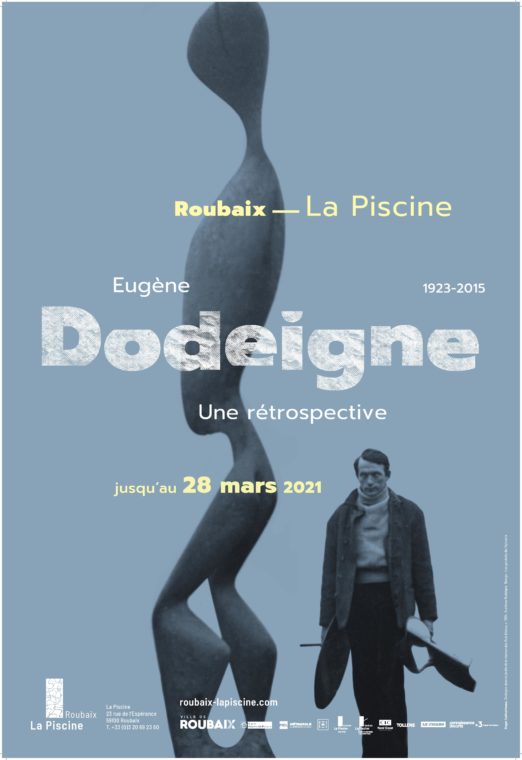Eugène Dodeigne (1923-2015): A Retrospective
Until March 28, 2021
To reconnect with its public after lockdown, La Piscine has made a strong symbolic move to present a great sculptor with links to the region. Eugène Dodeigne is not only a key figure of contemporary French sculpture, to which he made a very unique contribution that is recognised throughout the world, but also one of the leading figures of the Roubaix Group.
Born in Belgium in 1923, Eugène Dodeigne quickly became naturalised as a French citizen when his parents settled in the Nord region. Born with close connections to the stone trade, he descended from a family of stonemasons from the Soignies region, where this beautiful, yet hard-to-sculpt, stone comes from. Having learned the trade from the age of 13 from his marble-maker father, he showed promise for this work, which was spotted at the School of Fine Arts of Tourcoing, and later at the school of Paris, leading him to take it up as a profession. He was soon supported by regional collectors. Jean Masurel put him up in 1948 and Philippe Leclercq was to become a true patron of his work, especially through his efforts to associate himself with the construction of the Saint-Thérèse chapel in Hem. Represented by the Dujardin and Renar galleries of Roubaix, it was at the Marcel Evrard gallery that he held his first personal exhibitions in 1952 and 1955. The artist then worked with wood creating smooth and rounded shapes, which are worthy successors to the works of Brancusi and Arp. There he met Germaine Richier who introduced him to the artistic milieu of Paris. From then on, he participated in the Salon de Mai where he exhibited annually until 1965. From this period onwards, the exhibitions came thick and fast. His works were displayed in Paris. The Claude Bernard, Pierre Loeb and Jeanne Bucher galleries organised major exhibitions for him and showcased the stones he had been sculpting since 1956, as well as the expressionist bronzes he began creating from 1963. Not to be outdone, his sculptures started to pop up in foreign countries starting with Belgium, the Netherlands and Germany, as well as many public places and museum parks around the world. His Soignies stones became monumental in size with shapes torn from the substrate material depicting Man and the human condition.
This retrospective exhibition takes a fresh look at the artist, which is much less “monolithic” than previously thought, by reconsidering his work in all its richness. As well as the Soignies stones – his unmistakable trademark – there will be exhibits made of plaster, wood, bronze, terracotta in addition to drawings, paintings and pieces of furniture, covering a creative period of nearly 60 years, with a collection – the largest ever assembled – of 200 works.
Curator Germain Hirselj, Alice Massé and Bruno Gaudichon
Designer Cédric Guerlus – Going Design
Catalogue published by the publisher Invenit
This exhibition received the support of the Hauts-de-France Region and the Métropole Européenne de Lille. It is benefiting from the exceptional patronage of the CIC Nord Ouest, a loyal partner of La Piscine museum and generous support from Notre Logis and M comme Mutuelle. The exhibition design was completed thanks to generous support of the Couleurs de Tollens paints.



